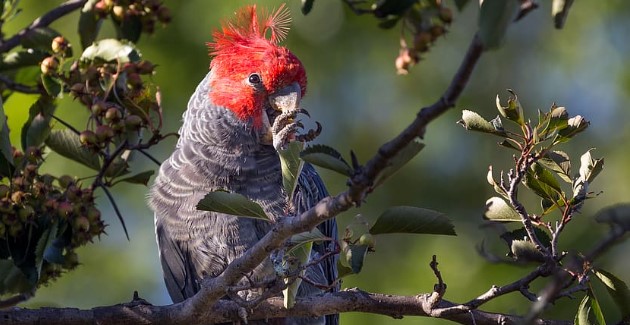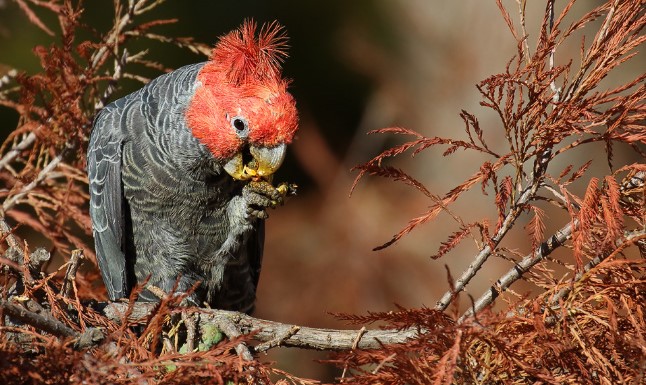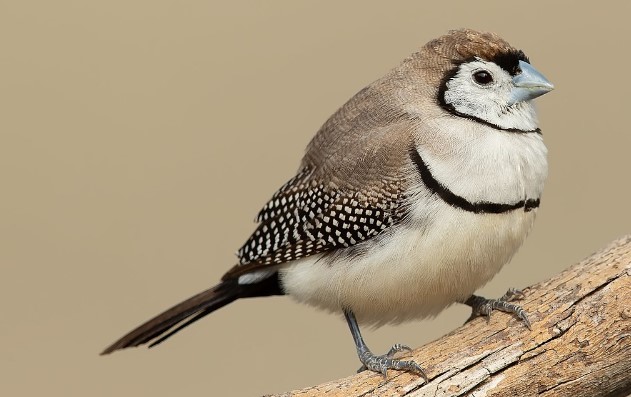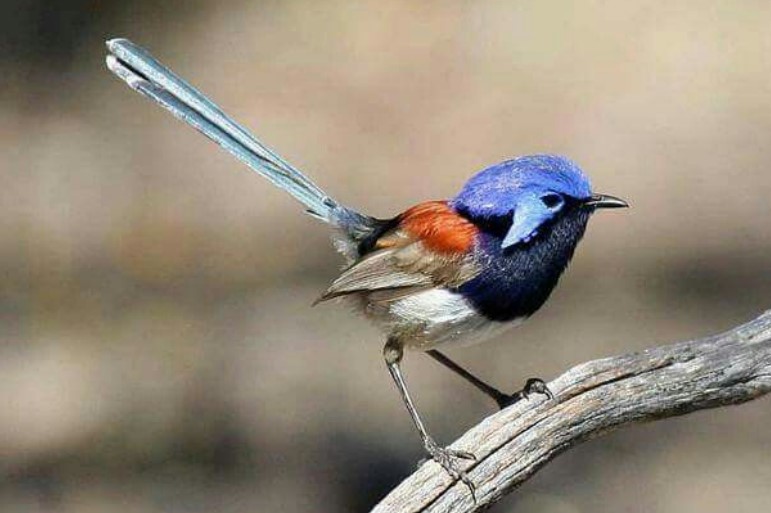Family: Gang-gang Cockatoo inhabits eucalypt forests and heavily wooded areas of southeastern Australia. The cockatoo belongs to the family Cacatuidae. A single species of Callocephalon belongs to this genus.
Diet: When feeding among branches, it becomes very tame and may almost be touched, which has caused it to become well-known. Every day, Gang-gang Cockatoos return to the same bush or tree until their food supplies run out. Seeds from native shrubs and trees such as eucalypts, acacias, cypress pines, hawthorn Crataegus and Cupressus, and other conifers have also been taken up by them.
When they crack seed capsules open with their strong bills, there is a continuous noise and debris litters the ground beneath the trees. Furthermore, they eat clusters of berries or seeds held on one foot. The cockatoo usually stays in the trees, visiting the ground only for drinking and inspecting fallen nuts and pine cones.
Read More – Pink Cockatoo

Behavior & Habitats: It usually assembles in small flocks during the breeding season, but it also stays in pairs during non-breeding seasons. In clumps of berry-laden hawthorn bushes, up to 80-100 birds have been observed feeding. Larger flocks may form where there is a plentiful food supply. There may be times when a feeding flock suddenly leaves a tree or bush without apparent reason, flies in wide circles overhead, screeching loudly, and then returns to the same tree to eat.
When it is raining or snowing, gang gangs may fly in circles over the forest canopy, occasionally swooping down from the treetops. With deep sweeping wing beats, their flight is heavy and sways from side to side. They spend the hottest part of the day sitting among eucalypt branches nearly without moving or sidling to each other to preen.
Migration: The Gang-gang Cockatoo breeds in mountain forests and then migrates to lower valleys and coastal regions during the winter, where it frequents gardens and parklands and enters Canberra and the outer suburbs of Melbourne. Some birds stay in the mountains during the winter, especially if the weather is mild, and small groups of non-breeding birds may remain in the lowlands throughout the summer.
Alternative Names: In addition to its common name, the bird is also known as the Red-crowned Cockatoo or Helmeted Cockatoo. Gang-gang is a name from an Aboriginal language of New South Wales, possibly from Wiradjuri. Most likely, it is an onomatopoeic name.
Call / Sound: Easily identified by its prolonged jarring croak, the Gang-gang Cockatoo makes a kind sound like a cork being pulled from a bottle when it is in flight or in a forest tree. Birds ‘growl’ softly when fed.
Size: Among Australia’s avifauna, Gang-gang Cockatoos are one of its most distinctive and charismatic species. Gang-gang Cockatoos are about 350 mm long, including their short, square tails.
Identification: MALE: The general plumage is gray, including the wings and tail, and the feather edges are pale gray or white. The head and crest are bright red. There is a strong washing of dull green on the wing coverts on the outer webs. There is a faint orange-yellow edge to the feathers of the lower belly and undertail coverts. The eyes are dark brown. The bill is horn-shaped. The feet and toes are grey.
Read More – Sulphur-crested Cockatoo (cacatua galerita)
FEMALE: Feathers of the underparts are broadly edged with orange and green-yellow, forming a distinct cast. The crest and head are gray; the wings and tail are coarsely marked with pale gray or white bars.
IMMATURES: Similar to an adult female. There is a heavy barring of gray or white on the underside of the tail. The young males have red-tipped crests and red markings on their foreheads and crowns by the end of their first year. Dark grey is the color of the bill.
DOWNY YOUNG is long and yellow-downed.
Nest & Breeds: Breeding and nesting occur between October and January. In a nest, a hole is drilled in a tree’s trunk or dead branch, at a great height, which is chosen by the female. A Gang-gang cockatoo enters its nest head first, just like other short-tailed cockatoos. By chewing on the sides of the hollow and scraping out the chips, the birds increase the size of the hollow.
Eggs: Two or three white eggs are laid by the Gang-gang Cockatoo bird. Approximately 36 x 28 mm in size, the eggs are oval in shape. Both sexes incubate for approximately 30 to 32 days. It takes about seven weeks for chicks to leave the nest after hatching, and they are fed for at least four to six more weeks.
Distribution: Gang-gang Cockatoo prefers forests and woodlands with dense shrub understory in the mountains. Winter brings the birds into more open habitats where they migrate short distances. Breeding requires them to return to denser forests, as tall trees help them build nests. This species of cockatoo is primarily found along the coast and high in the inland mountains of southeastern Australia; its range extends from the Hunter Valley in NSW to Portland in Victoria.
Gang-gang Cockatoos are sometimes found in the southeast of South Australia, introduced to Kangaroo Island, SA. They are rare at the extremes of their range, including King Island, where they are extinct, and Tasmania, where they are a stray. There are no races.
Read More: Palm Cockatoo










